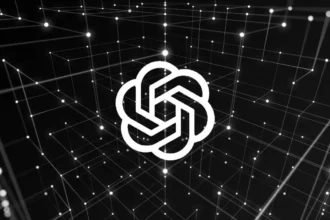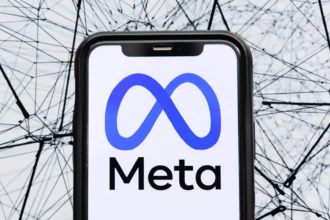An AI agent is a software system or program that can perceive its environment, think or decide based on that input, and act autonomously to complete a task or goal you assign it. Simply put, it’s like your robot helper that watches what’s around, figures out what to do next, and takes action without needing constant human instructions.
Imagine a robot buddy who can:
- Look around and understand the situation
- Think about the next step
- Do the job it decides on
That’s exactly what an AI agent does, only inside a computer or machine.
For example, think of a smart email assistant. You tell it: “Go through all my emails, find resumes, pick the best ones, and send them to manager Bob.” Instead of you doing this manually, the AI agent reads, understands, filters, and acts all by itself.
Some AI agents are very simple. Like a Roomba robot vacuum that cleans the floor by moving in a set pattern without thinking much. Others are complex and smarter, like Jarvis from the Iron Man movies, which figures out what needs to be done and handles lots of tasks without step-by-step instructions.
Here’s what makes up an AI agent:
- Perception: It gathers data using sensors or inputs, such as cameras, microphones, or digital data sources.
- Reasoning and Processing: It analyzes the data and makes sense of it using programmed rules or learned models.
- Decision-Making: It decides what action to take to reach its goal.
- Action: It interacts with the world by sending commands, generating output, or communicating with other systems or people.
AI agents come in several types depending on their capabilities:
- Reactive Agents: These respond directly to stimuli without memory. For instance, a chatbot that replies instantly to your questions.
- Proactive Agents: These plan ahead and aim to achieve goals, like virtual assistants that schedule your appointments.
- Learning Agents: These improve over time by learning from experience, such as recommendation systems that suggest movies or products you might like.
- Autonomous Agents: These operate independently with minimal human input, like self-driving cars.
Some practical examples of AI agents include:
- Virtual Assistants: Alexa, Siri, and Google Assistant who respond to your voice commands and perform tasks like setting reminders or playing music.
- Chatbots: Customer service bots that answer questions or help you navigate websites.
- Robots: Industrial robots or humanoid robots working alongside people or performing repetitive tasks.
- Recommendation Systems: Netflix or Spotify suggesting movies, shows, or songs based on your preferences.
- Healthcare AI Agents: Systems that review patient data to help doctors with diagnosis and recommend treatments by detecting patterns humans might miss.
- Financial Agents: Bots analyzing stock market data in real time, predicting trends, and making trades automatically.
- Autonomous Driving: Self-driving car systems that sense the environment, make decisions, and drive without human help.
Today, the most advanced AI agents combine large language models (LLMs), like GPT-4, with various tools and APIs. This allows them not only to think and generate language but also to act in complex ways.
For example, an AI agent integrated with tools can:
- Read your emails to find receipts, then update a Google Sheet with that info.
- Summarize customer support tickets and send them to Slack channels.
- Monitor inventory and automatically order more stock if supplies run low.
Some AI agents even coordinate multiple smaller AI models. In this setup, a supervisor agent manages other models, delegates tasks, checks their work, and combines results for better accuracy. This teamwork reduces mistakes and gets closer to desired goals.
Beyond text interfaces, AI agents can work with software on your computer or the web. For example, in logistics, instead of manually checking many systems to manage scooter fleets, you tell the agent: “Reposition scooters for tomorrow in Milan.” The agent collects data from forecasts, weather, and demand, then plans routes, communicates with drivers, and reports when done. Tasks once needing five+ tools become seamless with AI agents.
There are risks to consider. Since AI agents may gain permissions to sensitive data like emails, calendars, and bank accounts, they must be secure. Without proper safeguards, bad actors could misuse AI agents. Mistakes like hallucinated commands—such as accidentally sending your bank info to the wrong person—are possible and a focus of ongoing research.
In the field of artificial intelligence, the term “agent” has long meant anything that can perceive its environment and act upon it. AI agents take this further: they receive input, decide intelligently, and take autonomous action using programmed intelligence or learned knowledge.
Most people today think of an AI agent as an LLM-powered system that can chat, connect to other AI models, access tools, and handle real-world tasks independently. There is no single strict definition, but it always involves some level of autonomous decision-making and action.
| Aspect | Description | Example |
|---|---|---|
| Perception | Collect data from environment or users | Camera input in a self-driving car |
| Reasoning | Analyze and decide based on data | Identifying road signs |
| Decision-Making | Select action aligning to goals | Choosing to brake or accelerate |
| Action | Execute commands in environment | Steering the vehicle |
Overall, AI agents are tools that automate complex tasks by perceiving, thinking, and acting with little or no human help. They range from simple digital assistants answering questions to sophisticated multi-tool systems managing entire business processes or fleets of machines.
- AI agents observe their environment, process data, and act autonomously.
- They vary from basic reactive agents to fully autonomous learners.
- Examples include chatbots, virtual assistants, healthcare AI, financial bots, and self-driving cars.
- Modern AI agents use large language models combined with APIs and tools to handle complex multi-step tasks.
- While powerful, AI agents require careful security to avoid misuse or errors.
What makes an AI agent different from regular software?
An AI agent can perceive its environment, make decisions, and act independently to reach goals. Unlike regular software, it adapts and works without step-by-step instructions.
Can you give real-life examples of AI agents?
Simple ones include chatbots answering questions. Complex examples are virtual assistants like Siri that manage tasks or self-driving cars that navigate traffic on their own.
How do learning AI agents improve over time?
They learn from past experiences and data. For example, recommendation systems adjust their suggestions by analyzing what users like or ignore to get better at predicting preferences.
How do AI agents use tools alongside large language models?
Agents can call APIs or perform searches to gather information. For example, an AI may read emails, find receipts, and update a spreadsheet automatically using built-in tools.
What components allow an AI agent to function effectively?
They include perception (gathering data), reasoning (analyzing data), decision-making (choosing actions), and acting (interacting with the environment, like sending commands or output).





